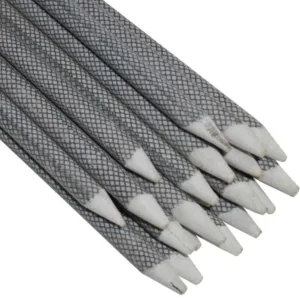Introduction
If you’re an avid gardener or someone who takes pride in maintaining a beautiful landscape, you understand the importance of providing proper support to young and delicate trees. One effective solution to ensure the healthy growth of trees is by using fiberglass tree stakes. In this article, Unicomposite pultruded profiles will explore the benefits, installation process, and best practices of using 11 16 fiberglass tree stakes.

11 16 fiberglass tree stakes
1. Understanding the Importance of Tree Stakes
Tree stakes provide essential support to young trees, helping them establish a strong root system and withstand external factors such as wind, storms, or accidental damage. By stabilizing the tree, stakes promote vertical growth, prevent leaning, and encourage straight trunks.
2. Advantages of Fiberglass Tree Stakes
Fiberglass tree stakes offer several advantages over traditional materials like wood or metal. These stakes are lightweight, durable, and resistant to rot, rust, and pests. They provide flexibility, allowing trees to sway naturally in the wind, which strengthens the trunk and encourages root growth. Additionally, fiberglass stakes are non-conductive, making them safe for trees near electrical lines.
3. Factors to Consider When Choosing Fiberglass Tree Stakes
When selecting 11 16 fiberglass tree stakes, consider the height and diameter of your trees. Ensure the stakes are long enough to provide sufficient support without interfering with the tree’s crown. The stakes should be sturdy enough to withstand weather conditions specific to your area, such as strong winds or heavy rainfall.
4. Preparing for Installation
Before installing fiberglass tree stakes, examine the planting site and identify any potential hazards or underground utilities. Clear the area of debris, rocks, or weeds that may hinder the installation process. It is advisable to choose stakes that match the color of the tree bark to minimize visual impact.
5. Step-by-Step Guide to Installing 11 16 Fiberglass Tree Stakes
Step 1: Positioning the Stakes
Drive the fiberglass stakes into the ground at equal distances from the tree trunk, forming a triangle around it. Ensure the stakes are positioned on the windward side of prevailing winds for maximum support.
Step 2: Attaching Tree Ties
Secure the tree to the stakes using soft, flexible tree ties. Avoid using materials that may damage the bark or restrict the tree’s growth. Attach the ties loosely, allowing room for natural movement and growth.
Step 3: Adjusting Tension
Gently adjust the tension on the ties to provide support without constricting the tree. The ties should be snug enough to hold the tree in place but not too tight to hinder its development.
Step 4: Checking Alignment
Regularly check the alignment of the tree with the stakes. Adjust the ties and stakes if necessary to maintain a straight and upright position.
6. Maintaining and Monitoring Tree Stakes
Monitor the growth of the tree and regularly inspect the stakes and ties for any signs of damage or wear. Make necessary adjustments to ensure the stakes continue to provide adequate support as the tree develops. Remove the stakes and ties once the tree has firmly established itself.
7. Common Mistakes to Avoid
- Placing the stakes too close to the trunk, which may damage the root system.
- Tying the tree too tightly, impeding its natural movement and growth.
- Neglecting to regularly check and adjust the stakes and ties.
Frequently Asked Questions (FAQs)
Q1: Can fiberglass tree stakes be reused? A1: Yes, fiberglass tree stakes can be reused for multiple seasons, making them a cost-effective solution.
Q2: How long should I leave the tree stakes in place? A2: The duration depends on the tree’s growth rate and environmental conditions. Generally, stakes should be removed within one to three years.
Q3: Are fiberglass tree stakes suitable for all tree sizes? A3: Yes, fiberglass tree stakes are available in various lengths and diameters, making them suitable for trees of different sizes.
Q4: Can I install fiberglass tree stakes on mature trees? A4: Fiberglass tree stakes are primarily used for supporting young or newly planted trees. Mature trees generally have a well-established root system and require less external support.
Q5: Can I leave the tree stakes on permanently? A5: It is not recommended to leave tree stakes on permanently, as the tree needs to develop a strong trunk and root system capable of supporting itself.
Conclusion
Using 11 16 fiberglass tree stakes is an effective way to provide crucial support to young trees and ensure their healthy growth. These lightweight and durable stakes offer numerous advantages over traditional materials, and their installation process is relatively straightforward. By following the outlined steps and considering best practices, you can enhance the stability and resilience of your trees, contributing to a flourishing landscape.
Get Access Now
For more information on gardening techniques and tools, and to explore a wide range of products, visit our website and get access to exclusive offers: https://bit.ly/J_Umma
 info@unicomposite.com
info@unicomposite.com


























